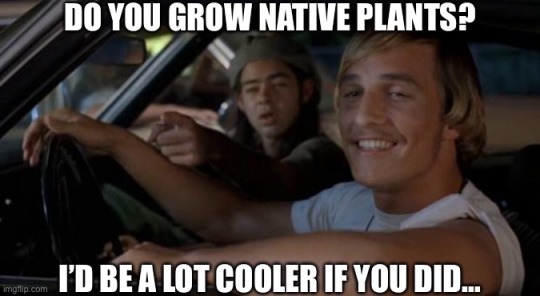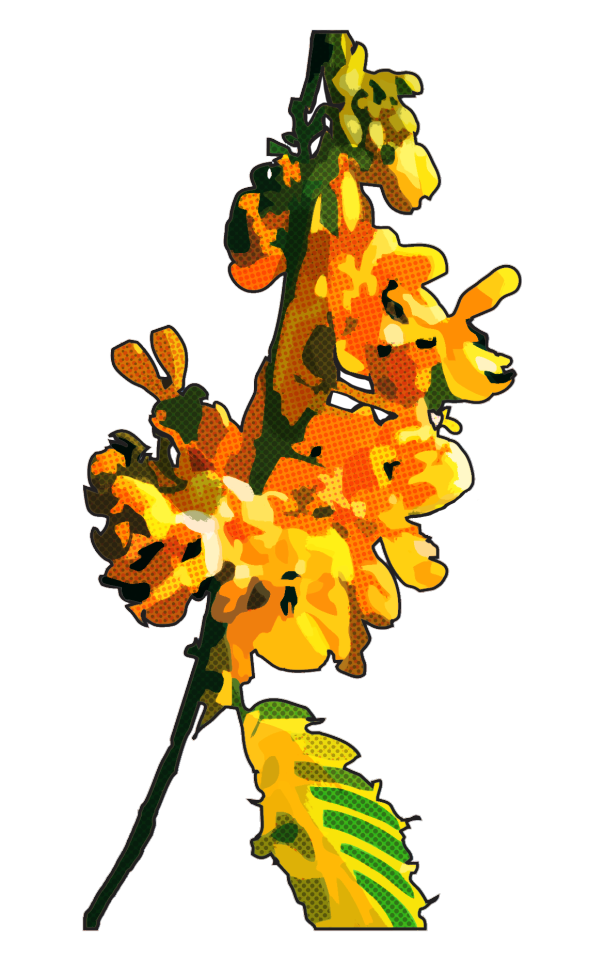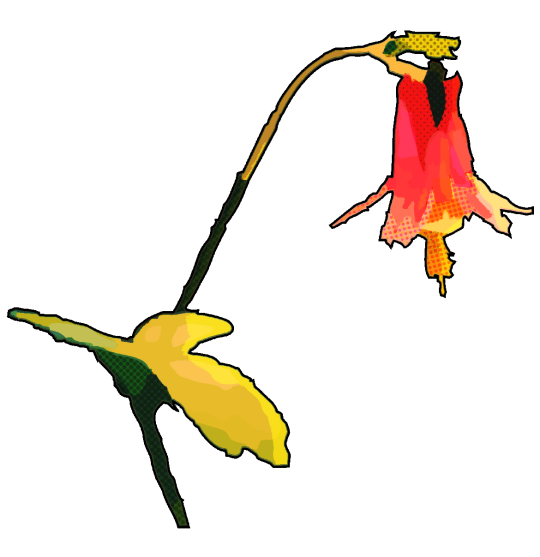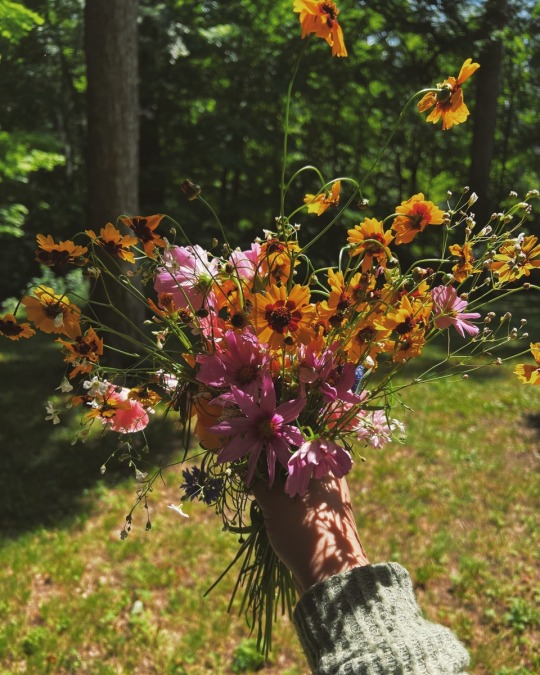#plant native
Text

#plant native#memes#meme#tumblr memes#plant meme#nature meme#meme humor#memesdaily#funny memes#humor#humour#political memes#political humor#political shitposting#leftist memes#leftist politics#socialist memes#socialist politics#communist memes#communist#ecology#environmental#environmental impact#environmental justice#environmentalism#environmental activism#environmentallyfriendly#eco friendly#shitpost#best memes
173 notes
·
View notes
Text
https://www.cnn.com/2023/04/21/world/iyw-rufous-hummingbird-tipping-point-extinction-earth-day/index.html#:~:text=The%20Rufous%20hummingbird%20lost%20two,if%20conservation%20doesn't%20improve.
Plant NATIVE honeysuckle, not the ones you buy at Home Depot or Lowe’s. You can find them at local native plant sales or online at native plant nurseries.
Update since this is going viral:
The hummingbirds in my restored yard habitat visit ALL of the native flowers in my yard, so it doesn’t strictly have to be honeysuckle. They just tend to like flowers with trumpet shapes.
#nature#pollinators#hummingbird#Rufus hummingbird#birds#birding#native plants#plant native#midwest#backyard wildlife
344 notes
·
View notes
Text
It would be nice if humanity could reach a point where landscaping like this is not okay. I walk past this area frequently, and they regularly nuke everything with roundup and remove all the detritus. Think of all the arthropods and other wildlife this wasted space could support. I understand having fire buffers around buildings, but this attitude isn’t exclusive to plots close to buildings…

I also understand many native plants can be more difficult to grow, but California poppies (in the Bay Area) are not one of them. I’m sure other regions have similarly easy to grow species. Even a few plants can make a huge difference.
We as a culture need to stop it with the blasé attitude about the destruction of nature, particularly bugs (ie invertebrates). “Kill it with fire” is a shitty and ignorant way to react to a tiny animal that is merely trying to exist. The vast majority of bugs are not out to get you and are, in fact, terrified of you (rightfully so in many cases).
Would you squish a baby bird? Didn’t think so.
#rant#that article yesterday set me off lol#it’s been bothering me for a long time though#ecology#ecological destruction#bugs#don’t squish bugs#sustainable landscaping#plant native#native species#nature#biodiversity#conservation#roundup#stop it
56 notes
·
View notes
Video
Homegrown National Park
Grassroots call-to-action to REGENERATE BIODIVERSITY by PLANTING NATIVE.
https://linktr.ee/homegrownnationalpark
#tiktok#Homegrown National Park#valentine's day#biodiversity#plant native#DIY garden#gardening#community garden#garden#solarpunk#solar punk#native plants#garden plants#house plants#plants
354 notes
·
View notes
Text
some art ❤️

Designing my friend a Golden Kamuy Skateboard deck! Only have the sketch half way done so this is all i got at the moment.


I’m working with Newfields’ horticulture department (also known as The IMA/The Indianapolis Museum of Art) to design some graphics of native Hoosier plants in their pollinator garden. The yellow flower is the American Senna and the pink one is the Eastern Red Columbine.
#art#artist#fanart#anime#manga#gay#ima#newfields#indianapolis museum of art#american senna#eastern red columbine#flowers#native plants#hoosier#plant native#pollinators#pollinator garden#golden kamuy#sugimoto saichi#saichi sugimoto#asirpa#shiraishi yoshitake#yoshitake shiraishi#skateboarding#skater
59 notes
·
View notes
Text
Your invasive species are another place's native
don't shit on them so much; you make people feel the species are useless everywhere
#oh me? my posts?#plant native#native plants#invasiveplants#invasive species#native species#anti lawn#nature conservation
79 notes
·
View notes
Text
New Years Resolution
My resolution this year is to get my garden beds to 70 - 75% native plants. In early January, I ordered understory/shade plant seeds, including wild geranium and spreading Jacob’s ladder, to plant in the shadier beds. The seeds arrived this week. Today, I started the stratification process to break dormancy and get the seeds to germinate by mid-March. After germination, I’ll plant the seeds in pots until I can clean out the beds and put in some new soil. I plan to do this without killing a single non-native - my neighbors will happily adopt the hosta and other plants I remove. This is a new process for me, but I’m excited to make the beds more representative of the local ecosystem and help out the pollinators who depend on native plants.
39 notes
·
View notes
Text

5 notes
·
View notes
Text

Native plant miniprints posts part two! These prints will be available on my etsy on the equinox, m.20 2023.
Since part of why I wanted to work on this project is that I wanted to learn more about familiar, local plantlife (I'm on treaty 7), I figured I should share some of that information while posting them. If you have any other information about these plants please share! Many of these plants have been used medicinally but thats not info I'm qualified to give.
Smooth Blue Beard Tongue, Penstemon nitidus
- grows in rocky, sandy conditions
- gets its name from the fuzzy yellow stamen "tongue"
Wild Blue Flax, Linum lewisii
- can be used to make cordage, fabric, paper etc.
Blue Columbine, Aquilegia brevistyla
- sometimes called granny's bonnet
- comes in a ton of different colors
- their latin name Aquilegia references eagle claws for the curling spur petals
find the rest of the posts here, including any future additions:
1/2/3/4/5/(tbc)
#treaty 7#mohkístsis#alberta#calgary#yyc#botanical art#floral art#plant local#floral print#spring equinox#plant native#blue beard tongue#wild blue flax#blue columbine#columbines#granny's bonnet
8 notes
·
View notes
Text

Anyone else have noxious weeds they hate?
2 notes
·
View notes
Text

#plant native#plants#ecology#environmentalism#environmental#environmental activism#environmental justice#environmental science#environmental impact#political#political posting#politics#socialist#socialism#leftist#leftism#leftist politics#left wing politics#left wing#communist#communism#leftist memes#socialist memes#communist memes#socialist politics#ecofriendly#political memes#political humor#political shitposting#meme humor
13 notes
·
View notes
Text
Some things in my yard. I cultivated some, others are growing wild.
#nature#certified yard habitat#yard habitat#spring#spring ephemerals#plant native#native plants#native plants of north america#prairie trillium#trillium recurvatum#virginia bluebells#mertensia viginica#Dutchman’s breeches#dicentra cucullaria#Podophyllum peltatum#mayapple#fungi#fungicore
17 notes
·
View notes
Text
How to Make Your Home Pollinator-Friendly
Even though it’s the beginning of winter, it’s never too early to plan for a garden. If you’re just starting or you want to transition to a garden that attracts more pollinators, I’m going to be sharing a few tips that will help you attract all the bees and butterflies to your backyard.
Flowers, flowers, flowers.
Flowers are the key to attracting pollinators to your garden, but how many do you…

View On WordPress
5 notes
·
View notes
Text


Spent this beautiful evening weeding, tackling the invasive species my dumbass younger self added to the yard in the misguided belief that ~buT THEY’RE P R E T T Y~ mattered more than the ecological harm they cause 😠😖😭

#meanwhile in minnesota#fuck and I mean full belly bellow F U C K the showy lupine (from the PNW) that’s invading my county#and damn every numpty who spreads it ~bc it’s pretty~#gardening#invasive species#plant native
1 note
·
View note
Text
#tiktok#andrew_the_arborist#urban gardening#urban landscape#ecofriendly#native wildflowers#eco friendly#eco lawn#native plants#garden#gardening
39K notes
·
View notes
Text
"With “green corridors” that mimic the natural forest, the Colombian city is driving down temperatures — and could become five degrees cooler over the next few decades.
In the face of a rapidly heating planet, the City of Eternal Spring — nicknamed so thanks to its year-round temperate climate — has found a way to keep its cool.
Previously, Medellín had undergone years of rapid urban expansion, which led to a severe urban heat island effect — raising temperatures in the city to significantly higher than in the surrounding suburban and rural areas. Roads and other concrete infrastructure absorb and maintain the sun’s heat for much longer than green infrastructure.
“Medellín grew at the expense of green spaces and vegetation,” says Pilar Vargas, a forest engineer working for City Hall. “We built and built and built. There wasn’t a lot of thought about the impact on the climate. It became obvious that had to change.”
Efforts began in 2016 under Medellín’s then mayor, Federico Gutiérrez (who, after completing one term in 2019, was re-elected at the end of 2023). The city launched a new approach to its urban development — one that focused on people and plants.
The $16.3 million initiative led to the creation of 30 Green Corridors along the city’s roads and waterways, improving or producing more than 70 hectares of green space, which includes 20 kilometers of shaded routes with cycle lanes and pedestrian paths.
These plant and tree-filled spaces — which connect all sorts of green areas such as the curb strips, squares, parks, vertical gardens, sidewalks, and even some of the seven hills that surround the city — produce fresh, cooling air in the face of urban heat. The corridors are also designed to mimic a natural forest with levels of low, medium and high plants, including native and tropical plants, bamboo grasses and palm trees.
Heat-trapping infrastructure like metro stations and bridges has also been greened as part of the project and government buildings have been adorned with green roofs and vertical gardens to beat the heat. The first of those was installed at Medellín’s City Hall, where nearly 100,000 plants and 12 species span the 1,810 square meter surface.
“It’s like urban acupuncture,” says Paula Zapata, advisor for Medellín at C40 Cities, a global network of about 100 of the world’s leading mayors. “The city is making these small interventions that together act to make a big impact.”
At the launch of the project, 120,000 individual plants and 12,500 trees were added to roads and parks across the city. By 2021, the figure had reached 2.5 million plants and 880,000 trees. Each has been carefully chosen to maximize their impact.
“The technical team thought a lot about the species used. They selected endemic ones that have a functional use,” explains Zapata.
The 72 species of plants and trees selected provide food for wildlife, help biodiversity to spread and fight air pollution. A study, for example, identified Mangifera indica as the best among six plant species found in Medellín at absorbing PM2.5 pollution — particulate matter that can cause asthma, bronchitis and heart disease — and surviving in polluted areas due to its “biochemical and biological mechanisms.”
And the urban planting continues to this day.
The groundwork is carried out by 150 citizen-gardeners like Pineda, who come from disadvantaged and minority backgrounds, with the support of 15 specialized forest engineers. Pineda is now the leader of a team of seven other gardeners who attend to corridors all across the city, shifting depending on the current priorities...
“I’m completely in favor of the corridors,” says [Victoria Perez, another citizen-gardener], who grew up in a poor suburb in the city of 2.5 million people. “It really improves the quality of life here.”
Wilmar Jesus, a 48-year-old Afro-Colombian farmer on his first day of the job, is pleased about the project’s possibilities for his own future. “I want to learn more and become better,” he says. “This gives me the opportunity to advance myself.”
The project’s wider impacts are like a breath of fresh air. Medellín’s temperatures fell by 2°C in the first three years of the program, and officials expect a further decrease of 4 to 5C over the next few decades, even taking into account climate change. In turn, City Hall says this will minimize the need for energy-intensive air conditioning...
In addition, the project has had a significant impact on air pollution. Between 2016 and 2019, the level of PM2.5 fell significantly, and in turn the city’s morbidity rate from acute respiratory infections decreased from 159.8 to 95.3 per 1,000 people [Note: That means the city's rate of people getting sick with lung/throat/respiratory infections.]
There’s also been a 34.6 percent rise in cycling in the city, likely due to the new bike paths built for the project, and biodiversity studies show that wildlife is coming back — one sample of five Green Corridors identified 30 different species of butterfly.
Other cities are already taking note. Bogotá and Barranquilla have adopted similar plans, among other Colombian cities, and last year São Paulo, Brazil, the largest city in South America, began expanding its corridors after launching them in 2022.
“For sure, Green Corridors could work in many other places,” says Zapata."
-via Reasons to Be Cheerful, March 4, 2024
#colombia#brazil#urban#urban landscape#urban planning#cities#civil engineering#green architecture#green spaces#urban heat#urban heat island effect#weather#meteorology#global warming#climate change#climate hope#climate optimism#climate emergency#climate action#environment#environmental news#city architecture#bicycling#native plants#biodiversity#good news#hope#solarpunk#ecopunk#hopepunk
12K notes
·
View notes